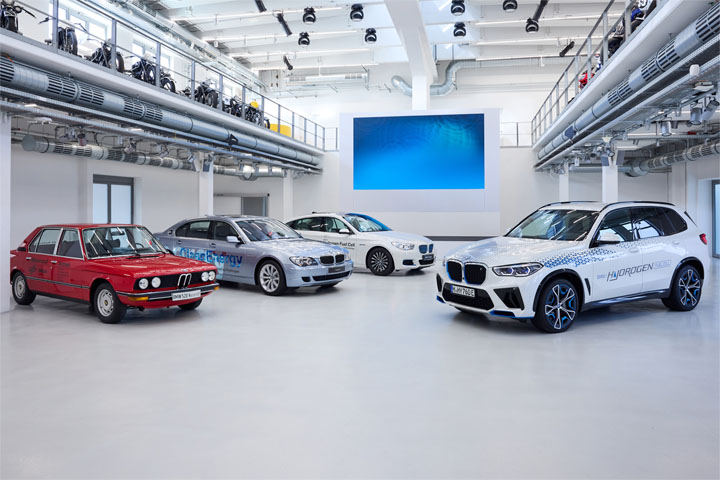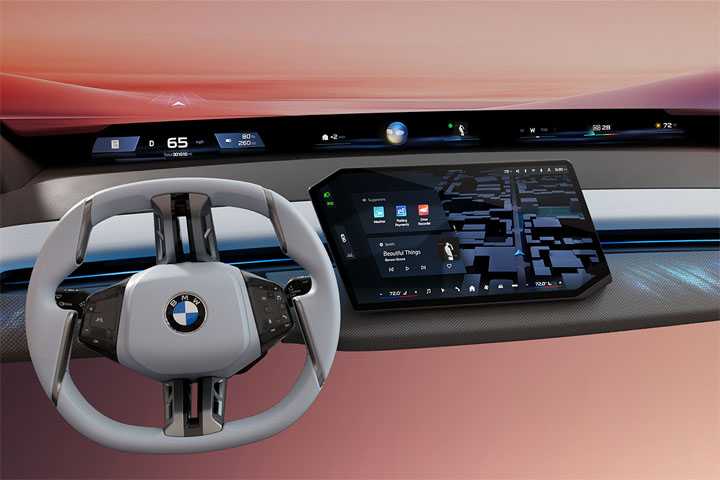Red. Yellow. Blue. It all began back in 1971, when BMW commissioned artist Gerhard Richter to create three large-scale paintings. Today, the company embraces its social responsibility in the realm of culture and is actively engaged in projects all over the world. Through its global cultural engagement, the BMW Group has established over 100 long-term initiatives in the fields of modern and contemporary art, classical music, jazz and sound, as well as in architecture and design.
BMW Group Cultural Engagement turns 50.
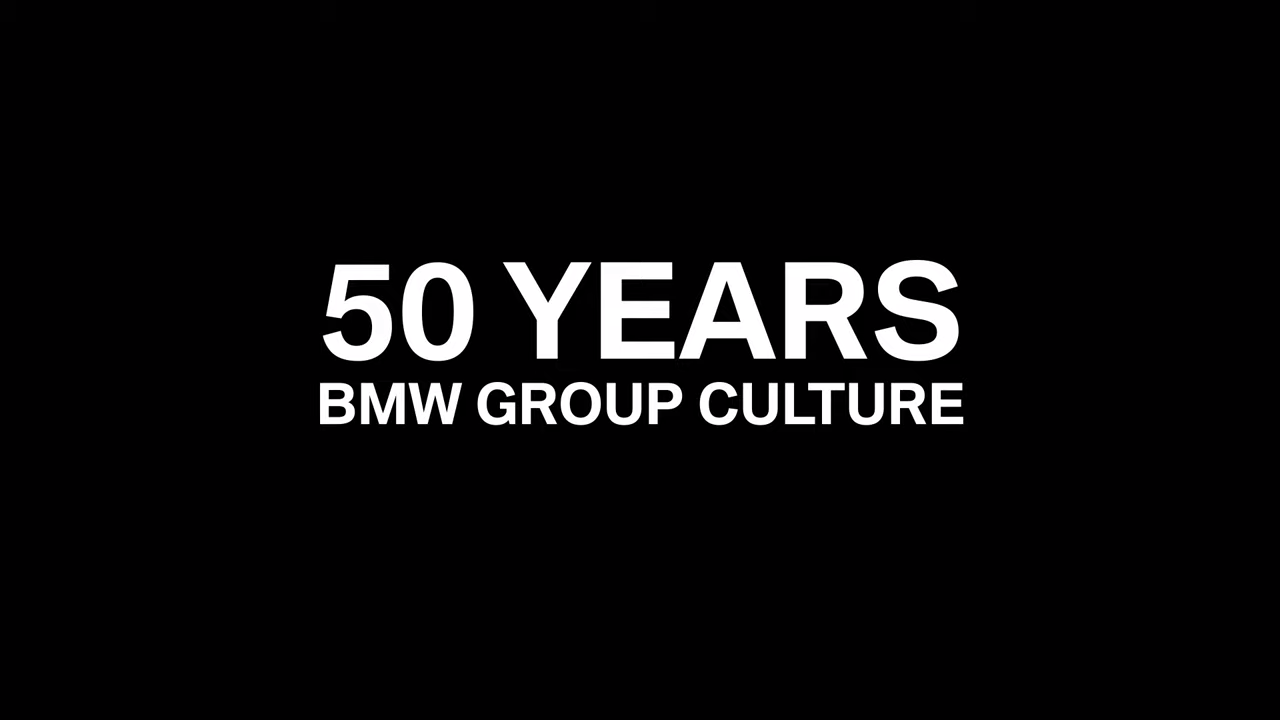
50 years of cultural engagement.
From the Guggenheim Museum to Tate Modern, from the Centre Pompidou to the Neue Nationalgalerie; from the opera house Staatsoper Unter den Linden and Milan’s La Scala to Moscow’s Bolshoi Theatre; from Art Basel to Frieze and the Kochi-Muziris Biennale: The BMW Group’s cultural engagement centres on the belief that corporate citizenship and intercultural dialogue are the foundation of any internationally successful company. The BMW Group always guarantees its partners full creative freedom in all collaborations and through commitments that are sustainable and geared towards the long term. The BMW Group sees itself as a patron and partner, creating an interaction based on networking, sharing expertise and knowledge, rather than the purely monetary transaction that defines a regular sponsorship.

Unique experiences and encounters promote intercultural dialogue and reflect the company’s aspirations and mindset in the cultural domain. With a diverse network of partners, cultural engagement at the BMW Group explores current narratives and brings people from around the world together – both virtually and in person. As a good corporate citizen, the BMW Group believes in making a lasting contribution to society.
The early years.
1971 – Gerhard Richter commissioned to create three large-scale paintings
The BMW Group laid the foundation for its cultural engagement by commissioning three large-scale works by German artist Gerhard Richter. In 1971, Eberhard von Kuenheim, former Chairman of the Board of Management of BMW AG asked Richter to produce three paintings for the foyer of the company’s new headquarters in Munich. The three works, “Rot”, “Gelb” and “Blau”, have been on display in its entrance hall ever since the iconic Four-Cylinder building designed by architect Karl Schwanzer opened in 1973.
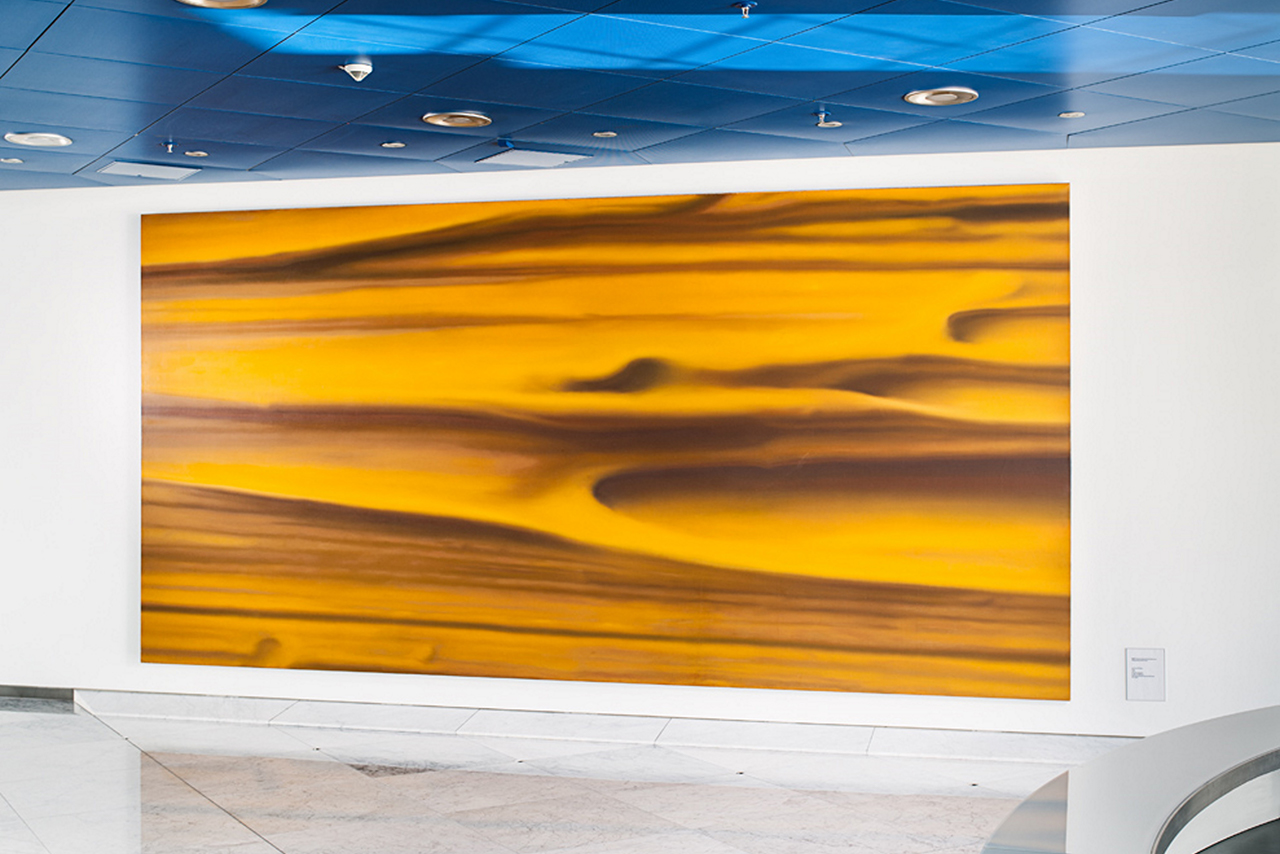
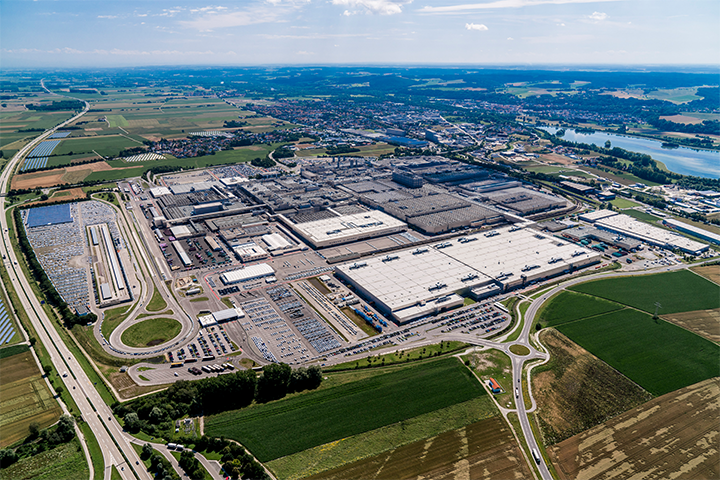
1973/74 – Plant Dingolfing and exhibitions at the BMW Group
From the beginning, the company’s cultural engagement was driven by a strong focus on its employees. In the early 1970s, BMW opened its plant in Dingolfing. Although there was still no autobahn connection between Dingolfing and Munich at that time, the site quickly emerged as an attractive location for skilled employees and the company worked hand in hand with cultural institutions to provide access to local arts and culture. At around the same time, a new gallery exhibiting art created by employees opened on the BMW Group campus in the north of Munich. An additional exhibition space was created to present shows such as “The Automobile in Contemporary Art”, which later led to collaborations with Munich’s renowned museums of fine art “Haus der Kunst” and the “Pinakotheken”.
1975 – The birth of BMW Art Cars
At the initiative of French racing driver and art lover Hervé Poulain and in close collaboration with the BMW Motorsport director at that time, Jochen Neerpasch, artist Alexander Calder was asked to design a BMW racing car for Poulain in 1975. The result was a painted BMW 3.0 CSL that was raced at the 24 Hours of Le Mans, where its striking design instantly made it a fan favourite. Since then, 19 artists from around the world have created BMW Art Cars based on contemporary BMW vehicles. These “rolling sculptures” are a fascinating representation of what happens at the intersection of motorsports and design, art and technology.
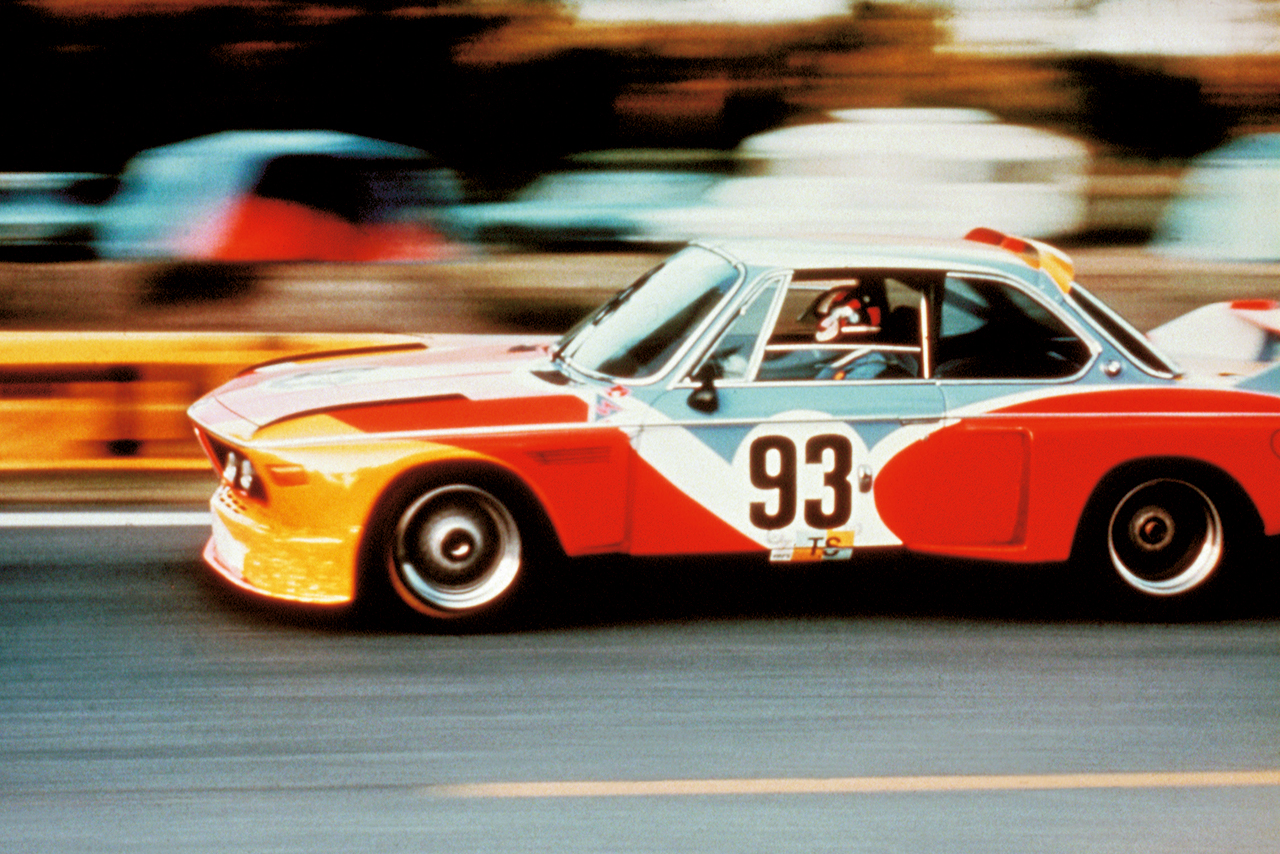
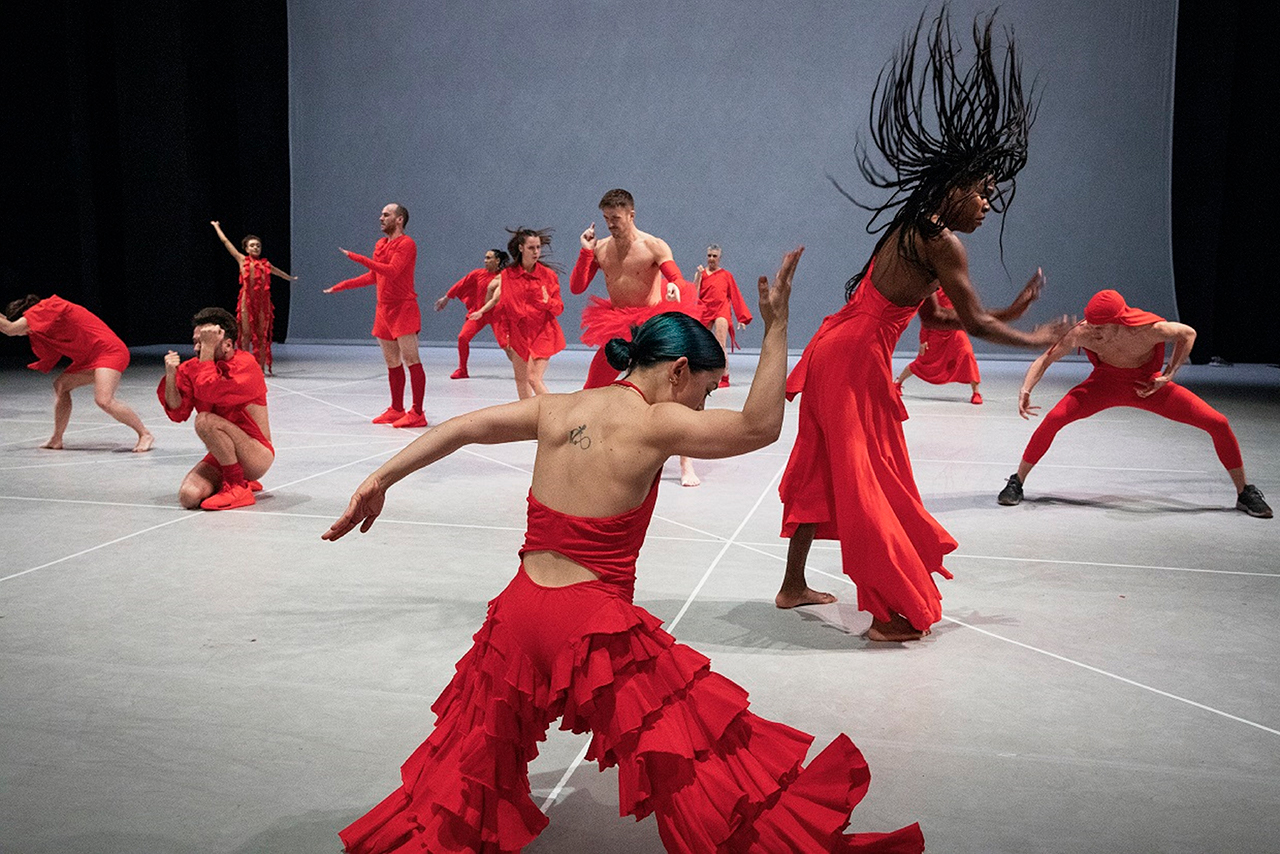
1979 – One of Germany’s first cultural public-private partnerships
In conjunction with the city of Munich, the BMW Group founded Spielmotor München e.V., one of Germany’s oldest public-private partnerships, back in 1979. The collaboration aims to establish and further develop the city as a regional and international cultural hub. Spielmotor expanded its programme to include the Munich Biennale for new musical theatre in 1988, the SPIELART festival in 1995 and the DANCE festival of contemporary dance in 1998.
50 years of BMW Group cultural engagement – 50 years of encounters
From Ólafur Elíasson, Cao Fei and Stefan Sagmeister to Jonas Kaufmann, Sir Simon Rattle, the Munich Philharmonic and the Teatro dell’Opera di Roma, to Esther Mahlangu and Victoria Siddall: The many congratulations the BMW Group is receiving from the cultural scene around the world are a reflection of the company’s long-standing and diverse cultural commitment.

BMW Group Cultural Engagement was congratulated, among others, by: Antoniu-Theodor Andreescu (musician), Richard Armstrong (director, Solomon R. Guggenheim Museum), Margarita Balanas (cellist), Anton Belov (director, Garage Museum of Contemporary Art), Berlin Biennale, Geoff Blackwell (CEO and publisher, Blackwell & Ruth), Cassy Britton (DJ), Kate Bryan (head of Collections, Soho House & Co), Astha Butail (artist), Alexandra Catiere (artist), Leelee Chan (artist), Maike Cruse (director, Gallery Weekend Berlin), Simon Denny (artist), Chris Dercon (president, Réunion des musées nationaux et du Grand Palais des Champs-Élysées), Ken Done (artist), Ólafur Elíasson (artist), Augusto Farfus (racing driver), Cao Fei (artist), Simon Fox (CEO, Frieze), Alex Galmeanu (photographer), Francesca Gavin (author and curator), Nadine Ghaffar (founder and general manager, Art D’Egypte), Venke and Rolf A. Hoff (founders, KaviarFactory), India Art Fair, Jonas Kaufmann (opera singer), Jeff Koons (artist), Bose Krishnamachari (president, Kochi Biennale Foundation), Marcel Lazăr (musician), William Lim (architect and collector), Esther Mahlangu (artist), Mazaccio & Drowilal (artist duo), Trevyn and Julian McGowan (founders, Southern Guild), Zubin Mehta (conductor), Dominique Meyer (CEO, Teatro alla Scala), Andra Mihai (artist), Paul Müller (director, Munich Philharmonic), Hans Ulrich Obrist (artistic director, Serpentine Galleries), Hoseki Okuyama (artist), Shwetal A. Patel (founding member, Kochi-Muziris Biennale), Sabin Penea (musician), Madalina Ioana Petre (musician), Georgie Pope (curator, Independent Collectors), Hervé Poulain (former racing driver and initiator of BMW Art Car Collection), Prateek and Priyanka Raja (founders, Experimenter), Carlo Ratti (founding partner, CRA – Carlo Ratti Associati), Sir Simon Rattle (conductor, London Symphony Orchestra), Magnus Resch (art-market entrepreneur), Robin Rhode (artist), Stefan Sagmeister (designer), Philipp Schiepeck (musician), Matthias Schulz (director, Staatsoper Unter den Linden), Victoria Siddall (global director, Frieze Fairs), Roman Sladek (musician), Marc Spiegler (global director, Art Basel), Julia Stoschek (director, Julia Stoschek Foundation), András Szántó (cultural strategist), Teatro dell'Opera di Roma, Christoph Wiesner (director, The Rencontres d’Arles), Lu Yang (artist), Gary Yeh (founder, ArtDrunk), Samson Young (artist) and Vanessa Zerahn (Independent Connectors).

